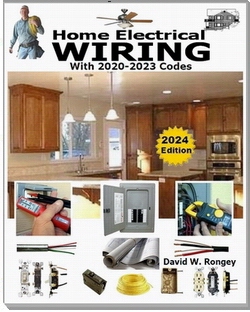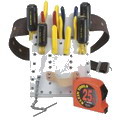» Home
» Electrical Wiring Directory
» Home Electrical Safety
» Need Electrical Help? Ask the Electrician
» Need Electrical Help? Ask the Electrician
Christmas Light Exchange
|
By Dave Rongey
Summary: People who want to make the switch to energy efficiency during the holidays can do so for free in participating areas during a light exchange event. These Christmas light exchange programs are designed to reduce energy consumption with the help of utility companies and energy conservation groups. |
Learn about Energy Efficient Christmas Lights
| Typically, residents in participating areas can recycle up to two strands of older inefficient Christmas lights, both large and mini, in exchange for super efficient multi-colored LED (light-emitting diode) holiday lights at no cost.
LED holiday lights reduce energy consumption by as much as 90 percent and uses light that produces less heat, reducing the risk of fire.
One reported area displayed twinkling lights strung above businesses in the downtown area and typically paid $3,500 to shine for five weeks. With the support of community energy efficiency groups this has grown into a cooperative effort to help reduce energy consumption and lower generating plant emissions. The Christmas light exchange is part of a program sponsored through a partnership with area Energy Watch Groups and Local Utility Companies. |
By replacing with energy efficient lights, bills have been reduced to $40. Residents must bring in old lights to exchange and a copy of their current Utility bill, their account number or billing address to receive the free lights. In some participating areas, residents can also receive two free CFL's (compact fluorescent lights) provided through a partnership with local utility companies, the Sierra Club and other Energy Reduction organizations.Find out if this program is available in your local area
Contact your local Electrical Utility Company, your Local Newspaper or the Chamber of Commerce for more information. If your area is not currently conducting such a program then take the initiative to get one started. Contact the Sierra Club for the local chapter in your area to get more information then get the word out.A Better Way to Light Up the Holidays
Holiday lights may help bring joy to the season, but they can also bring added costs to your energy bill. This year, save energy and money by purchasing energy-efficient LED (light-emitting diode) strands to decorate your home or business.
Standard incandescent holiday lights—and even mini-lights—can use a significant amount of energy and regularly involve costly (and irritating) bulb replacements. LED lights produce a bright light for up to 20 holiday seasons!
Compare the Costs when using energy efficient LED Lighting
The following chart compares the energy usage and operating cost of LED holiday lights to both mini and large incandescent holiday lamps in your home.
Type of Light |
Number of lights |
Power demand per light* (W) |
Annual** |
Average Annual Operating Cost*** |
Large incandescent |
300 |
7.00 |
472.50 |
$69.93 |
Mini Incandescent |
300 |
0.45 |
30.38 |
$4.50 |
C6 LED Lights |
300 |
0.043 |
2.90 |
$0.43 |
* Based on testing done by a local utility company
** Based on annual operation of 225 hours per year (5 hours/day for 45 days)
*** Calculated using average utility residential rate as of June 2007, $0.148/kWh.
Sets vary in cost depending on the style or number of lights on a strand. For example, a string of 35 LED lights costs from $8 to $10, while a string of 100 LED lights retails for $10 to $15.
LED technology produces light in a completely different way than incandescent lamps. While incandescent lamps emit light by heating a filament and produce waste heat in the process, LED lights are illuminated solely by the movement of electrons in a semiconductor material. Because they produce almost no heat, LED holiday lights present a greatly reduced risk of fire hazard over traditional incandescent strands and are safe to touch without worrying about burning your hands.
Christmas Time Safety
Christmas Tree Fire Prevention and Electrical Safety Tips
Home Electrical Extension Cords
|
|
|||||||
Top of Page |















